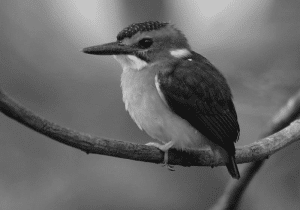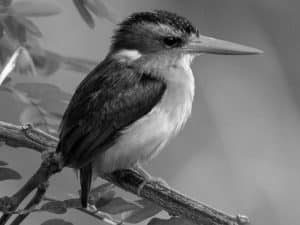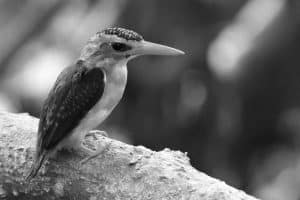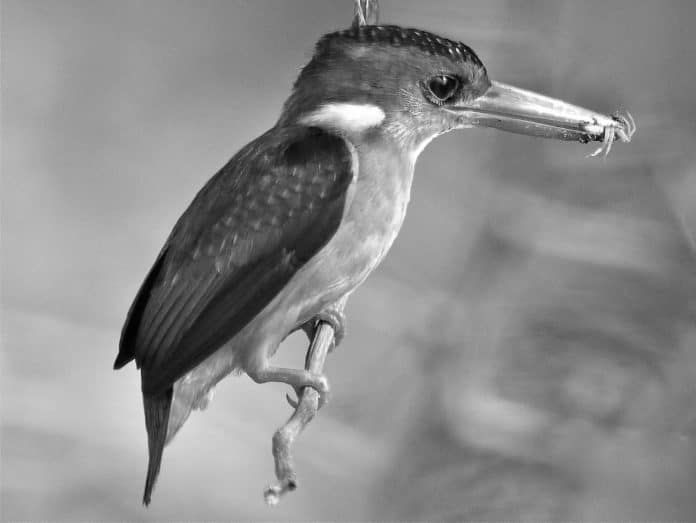Introduction to the African Pygmy Kingfisher
Welcome to the captivating world of the African Pygmy Kingfisher in Tanzania, a delightful avian species that enchants birdwatchers with its vibrant plumage and dainty size. The African Pygmy Kingfisher, scientifically known as Ispidina picta, is a diminutive bird that belongs to the Alcedinidae family. Found in the lush wetlands of Tanzania, this tiny jewel of the avian realm is a sight to behold. Measuring a mere 12 centimeters in length, the African Pygmy Kingfisher is a true pocket-sized wonder. Its striking combination of azure and russet feathers, coupled with its remarkable hunting prowess, makes it a prized sighting for nature enthusiasts and bird photographers alike.
The Habitat of the African Pygmy Kingfisher in Tanzania

The African Pygmy Kingfisher is primarily found in the tropical and subtropical moist lowland forests of Tanzania, particularly in the coastal regions and the eastern part of the country. These petite birds thrive in the verdant environs of wetlands, marshes, and riverbanks, where they can find an abundance of insect prey and suitable nesting sites. Their preferred habitats include wooded areas adjacent to water bodies, offering them ample opportunities to hunt for their favored aquatic insects and small invertebrates. The dense foliage and proximity to water sources provide the African Pygmy Kingfisher with the ideal setting to display its aerial acrobatics and fishing skills.
The intricate network of interconnected wetlands in Tanzania, such as the Rufiji River Basin and the Kilombero Valley, serves as vital sanctuaries for the African Pygmy Kingfisher, offering them a haven amidst the rich biodiversity of the region.
Behavior and Diet of the African Pygmy Kingfisher
The African Pygmy Kingfisher is a masterful hunter, employing a distinctive hunting technique to capture its prey. With swift and agile movements, it perches on a low branch or reed overlooking the water, patiently scanning for any signs of aquatic insects or small invertebrates. Once it spots its quarry, the kingfisher plunges into the water with remarkable precision, emerging with its catch clasped tightly in its slender bill. This remarkable display of agility and precision showcases the bird’s innate hunting prowess, making it a fascinating subject for observation and study.
In terms of diet, the African Pygmy Kingfisher predominantly feeds on aquatic insects, small fish, and crustaceans. Its varied diet reflects its adaptability to different ecological niches, allowing it to thrive in diverse wetland habitats across Tanzania. This flexibility and resourcefulness contribute to the bird’s resilience in the face of environmental changes, underscoring its significance in the local ecosystems.
Conservation Status and Threats to the African Pygmy Kingfisher
Despite its remarkable adaptability, the African Pygmy Kingfisher faces a range of conservation challenges in its native habitats. Habitat loss and degradation due to human activities, including deforestation, agricultural expansion, and urbanization, pose significant threats to the bird’s survival. The degradation of wetland ecosystems, pollution of water bodies, and disruptions to natural water flow patterns further exacerbate the challenges faced by the African Pygmy Kingfisher and other wetland-dependent species.
In addition to habitat-related concerns, the African Pygmy Kingfisher is also vulnerable to the impacts of climate change, which can alter the availability of suitable foraging grounds and nesting sites. These cumulative pressures underscore the importance of concerted conservation efforts to safeguard the future of the African Pygmy Kingfisher and its wetland habitats in Tanzania.
Where to Spot the African Pygmy Kingfisher in Tanzanian Wetlands
For avid birdwatchers and nature enthusiasts, Tanzania offers a wealth of opportunities to observe the African Pygmy Kingfisher in its natural habitat. The extensive network of wetlands and riverine landscapes provides prime locations for spotting these enchanting birds. Key areas for sighting the African Pygmy Kingfisher include the Selous Game Reserve, the Udzungwa Mountains National Park, and the wetlands surrounding the Kilombero Valley.
Within these biodiverse ecosystems, visitors can embark on guided birdwatching excursions, either by foot or through tranquil boat rides along meandering waterways. The rich tapestry of flora and fauna in these wetlands creates a picturesque backdrop for encountering the African Pygmy Kingfisher and a myriad of other avian treasures.
Tips for Birdwatching and Photography of the African Pygmy Kingfisher

When setting out to observe and photograph the African Pygmy Kingfisher, it is essential to adopt a patient and unobtrusive approach. These diminutive birds are easily startled and may retreat to the safety of dense foliage if they perceive any sudden movements or disturbances. By maintaining a respectful distance and minimizing noise and sudden movements, birdwatchers can increase their chances of witnessing the fascinating behaviors of the African Pygmy Kingfisher, from its aerial hunts to its distinctive calls.
In terms of photography, capturing the vibrant colors and swift movements of the African Pygmy Kingfisher requires a combination of technical skill and artistic flair. Utilizing a telephoto lens with a fast shutter speed can help freeze the kingfisher’s dynamic movements, while also preserving the intricate details of its plumage. Patience and a keen eye for composition are key to immortalizing the beauty of these pocket-sized wonders in their natural wetland habitats.
Unique Features and Characteristics of the African Pygmy Kingfisher
Beyond its diminutive size and vibrant plumage, the African Pygmy Kingfisher possesses a range of unique features and characteristics that set it apart in the avian realm. Its distinctive call, a series of high-pitched trills and whistles, resonates through the tranquil wetland landscapes, serving as a testament to its presence in the ecosystem. The bird’s compact build and rapid, darting flights contribute to its agile hunting prowess, allowing it to navigate the intricate web of branches and reeds with remarkable precision.
In addition, the African Pygmy Kingfisher exhibits fascinating nesting behaviors, constructing its nests in riverbanks or marshy areas, often within earthen burrows or termite mounds. The intricate nesting process and parental care displayed by these diminutive birds underscore their resilience and ingenuity in adapting to their wetland habitats.
The Significance of the African Pygmy Kingfisher in Tanzanian Ecosystems
As a key constituent of the Tanzanian wetland ecosystems, the African Pygmy Kingfisher plays a pivotal role in maintaining ecological balance and biodiversity. By preying on aquatic insects and small invertebrates, it helps regulate the population dynamics of its prey species, contributing to the overall health of wetland food webs. Furthermore, as an indicator species, the presence and abundance of the African Pygmy Kingfisher can serve as a barometer for the ecological integrity of wetland habitats, signaling any disturbances or imbalances that may require conservation interventions.
The aesthetic and cultural significance of the African Pygmy Kingfisher also extends to local communities and ecotourism initiatives, fostering an appreciation for the intricate beauty of Tanzania’s wetland landscapes and the avian treasures they harbor.
Efforts and Initiatives for the Protection of the African Pygmy Kingfisher

Recognizing the conservation challenges faced by the African Pygmy Kingfisher, a range of efforts and initiatives have been undertaken to safeguard its habitats and ensure its long-term survival. These include the establishment of protected areas and wetland reserves, such as the Kilombero Valley and the Selous Game Reserve, aimed at preserving critical habitats for the kingfisher and other wetland-dependent species.
Additionally, community-based conservation programs and partnerships with local stakeholders have been instrumental in raising awareness about the importance of wetland conservation and promoting sustainable coexistence between human activities and biodiversity conservation. Through education and outreach, these initiatives seek to foster a sense of stewardship and responsibility towards the preservation of the African Pygmy Kingfisher and the ecological landscapes it inhabits.
Conclusion
In conclusion, the African Pygmy Kingfisher stands as a symbol of resilience and beauty in Tanzania’s wetland ecosystems, captivating enthusiasts with its diminutive stature and vibrant plumage. As we navigate the intricate tapestry of wetlands and riverine landscapes in Tanzania, the presence of these pocket-sized wonders serves as a poignant reminder of the interconnectedness of all living beings within these biodiverse habitats. Through concerted conservation efforts, education, and sustainable practices, we can ensure that the African Pygmy Kingfisher continues to grace the wetlands of Tanzania, enchanting generations to come with its aerial prowess and charismatic presence.

































